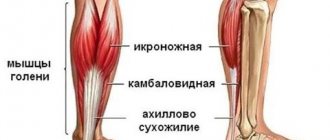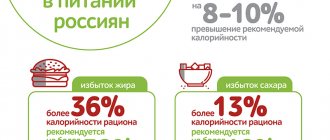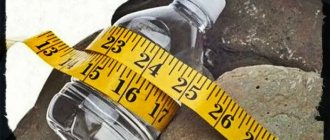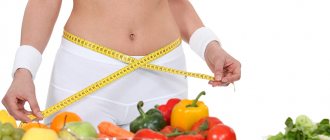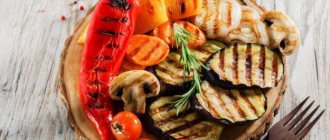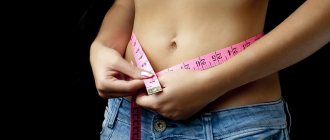Six months at LCHF
At the end of September last year, I decided on an unusual experiment with my diet, sharply reducing my carbohydrate intake to a minimum and increasing the amount of fat. I wrote a separate article about this, which I recommend reading:
- Let's talk about low carb nutrition
Naturally, all this was not done in a vacuum. The relevant topic was studied and the book by Andreas Enfeldt “The Food Revolution: A Diet Without Hunger” was read. A month later, when a positive result was already visible on me and no negative consequences were noticed, my wife tested this system, calmly and without stress, losing more than 3 kg in a month. Judging by the reviews in the comments and letters from readers, many people also liked this approach to nutrition.
In addition, the editor-in-chief of iPhones.ru Artur Malosiev , drawing attention to the changes in my appearance during a joint trip to Tbilisi, also decided to try this method and ultimately lost 6 kg of excess weight, after which he maintains the achieved shape without any problems. He also spoke about his own experience and intermediate results:
- Impressions from a low-carb diet
What can I say as a result? It is quite possible to maintain muscle mass and even improve your shape little by little on LCHF. Increasing is problematic. Still need carbohydrates. By the way, my athletic results got off the ground when, after two months of strict regime, I added a couple of days of binge eating on the weekends. Well, like a “gobble eater” - the basic nutrition was still the same, but I could allow myself sweets after meals or a couple of meals when I ate whatever I wanted. Including your favorite jelly candies.
The advantages of this mode:
- cheerfulness during the day (no drowsiness after lunch);
- complete absence of headaches (previously the skull sometimes reacted to sudden changes in weather);
- very good health of the gastrointestinal tract (no bloating or other everyday incidents);
- lack of hunger when eating only 3-4 times a day;
- good relief without much strain.
Minuses:
- In the first week of a strict diet, I felt as if I had a cold. Actually, I thought so, but one of the readers wrote that she got a similar effect. Plus the gastrointestinal tract rebelled a little. But from the second week I was like a cucumber. And at first I worked actively and trained without any problems.
- Strength endurance (10–15%) and training intensity dropped slightly.
- I ate little churchkhela and khachapuri during my trip to Tbilisi (but there was a lot of shish kebab).
They promised me all sorts of bad things in the end, up to the destruction of my body after a couple of months of this regime. But contrary to the predictions of ill-wishers, after six months of LCHF I was still alive, healthy, cheerful and ready for new experiments. Still, the topic is huge and it’s not worth staying still.
Exiting drying mode
When leaving a low-carb diet, it is necessary to remember that it is not only limiting their consumption that shocks the body. Therefore, returning to your usual diet must be done smoothly. It should take the same amount of time it took to dry.
Drying the body can give women results in a short period of time. Losing weight with proper organization of the process will be expressed in a decrease in volume and improvement in muscle tone. In order for drying to be successful, it is necessary to correctly create a diet and select a suitable training program.
Article design: Oleg Lozinsky
How I carefully exited LCHF
It was getting closer to summer, so there was a good incentive to dry out to the level of, so to speak, a fitness model. This means that 7 percent of body fat remains. Planned and done. Or rather, the matter has been launched and now the experiment is in progress, but everything turned out to be not so simple.
I needed to completely change my diet in terms of the ratio of macronutrients : reduce the amount of fat in the diet and add carbohydrates.
You can switch to LCHF abruptly, but back again - you should be careful here, since a sharp increase in the amount of carbohydrates in the diet on an ongoing basis can cause carbohydrate edema. That is, both water and fat will begin to actively accumulate. Even if we are talking about slow carbohydrates. In the past, even on a regular diet, I managed to eat too much when I sharply increased the amount of carbohydrates through pasta made from durum wheat and rice. What can we say about the body’s reaction after a low-carbohydrate meal.
Reduce only fat in the diet, without adding carbohydrates - then the calorie content will decrease even below the critical level for me of 2400-2500 kcal, which are needed to maintain basic metabolism. This is also not an option, because then the modes of saving energy and preserving reserves in the body will work, and there will be no talk of any drying. After all, on LCHF the amount of fat reached 250–300 g per day, but according to the new regimen I needed to squeeze into the 100–110 g range.
What I've done? I added carbohydrates and reduced the amount of fat very smoothly. The process was extended over three weeks. I added +100–150 g of buckwheat (boiled, that is, in dry form it is about 30–50 g) to the diet in the first week, a little grapefruit and apples. The amount of carbohydrates increased from 80–100 g to 150 g per day. In the second week, the same amount of buckwheat for the second meal. The third one has a little more sauces and apples.
As a result, I reached the current level of carbohydrates of 150–200 g per day, not only without gaining excess weight, but also losing 4 kg of fat (and, apparently, water too, although it was already not enough). But, of course, it’s not just about carbohydrates, but also about training, the diet in general, and additional supplements. I'll tell you about all this below.
Thus, if you decide to switch from LCHF to a more classic diet using slow carbohydrates (I do not recommend sticking to simple carbohydrates and pure sugar), then follow a simple scheme: + 50 g of carbohydrates per week while simultaneously reducing the amount of fat in the diet to Do not go beyond your caloric intake, which is what keeps you at a comfortable weight.
Rule #3: Take vitamins and bifidobacteria
Exhausted by the carbohydrate-free race for relief, the body needs restoration. First of all, you should focus on the intake of nutrients that were excluded from the diet during the drying process. These are groups of vitamins B and E, vitamin D3, trace elements calcium and magnesium. It is best to take a multivitamin complex in a course of 1-2 months.
To avoid problems with digestion and bloating, the exit after drying must be accompanied by the intake of bifidobacteria and enzymes. For the same reason, in the first weeks after ending the carbohydrate-free diet, try to exclude sour fruits from your diet.
If you follow these rules, you should also constantly monitor your psychological state. The process of recovery after drying may be accompanied by aversion to one’s reflection in the mirror. In order not to fall into depression, you need to constantly remind yourself of two things.
Firstly, you can’t get out of drying without absolutely gaining weight. Three to four kilograms will return in any case. Secondly, you have done a tremendous amount of work on yourself, and the quality of your body has already noticeably improved, that is, the goal has been achieved in any case.
Don't miss interesting news and events in the telegram channel: https://tlgg.ru/fitbarnews
New experiment - careful drying
Professional athletes often dry out using extreme methods with a sharp change in diet, fierce training, huge amounts of cardio and other harsh activities. All this is acceptable for them, since people work for results to win competitions and use all available means, including pharmacological support. But this is not very interesting for me personally (not applicable for family and relatives, and I’m not preparing for competitions) and 90% of citizens who just want to get rid of excess weight and look good. We need something more accessible.
In this field, such a person, not very well known in wide circles, but respected in narrow circles as Yaroslav Brin, . He staged exciting events several times where he brought himself to the second stage of obesity, and then returned to fitness model shape in four months. At the same time, he also helped many people get into shape, get rid of excess fat, and at the same time change their lives in order to then maintain the results.
Yes, yes - if you want to look beautiful all the time, you will have to constantly monitor your diet and be physically active. When such a rhythm becomes a habit, this is called changing your lifestyle.
Information about his method is available on the Internet and if you are interested in the topic, start with Brin’s book “Transforming fat for willpower.” It is distributed free of charge and is not difficult to find.
So, I took his method as a basis, in which there are actually no miracles, but it is scientifically sound and, most importantly, tested and works. Yes, you need to exert yourself and control your diet, train with weights and do cardio. Who said it would be easy?
And now, briefly, what needs to be done:
- Weigh yourself in the morning on an empty stomach, measure your waist, hip, buttocks and any other parts of the body as desired.
- Calculate how many calories were used to consume the weight (and belly) that you now maintain. Everything here is simple and not simple at the same time. You will have to write down everything you eat during the week, count the calories at the end of the day, and at the end of the week, collect all these calories and divide by seven to get the average. Remembering it is the starting point. In my case it was about 3200 kcal.
- Bring your macronutrient diet back to normal over the next week or two, at the same time giving up simple carbohydrates (sweets, pure sugar, baked goods) and alcohol (it has a bad effect on the hormonal system and generally destroys the female hormonal system). If you really want sweets, you can use sweeteners or eat candy or a piece of dark chocolate, but after a heavy meal. The BJU norm is as follows : 1.5–2 g of protein per kg of body weight for women, 2–2.5 g of protein per kg of body weight for men; 1 g of fat per kg of body weight (within reasonable limits - if you weigh 150 kg, then you can get by with 100 g of fat); the rest comes from complex carbohydrates. You can eat in the same quantities as before, but without simple carbohydrates. Already at this stage, it turns out that you are undernourished, since you cannot cram as much meat with buckwheat and salad into yourself as you can fit in cakes, cookies and hamburgers.
- In parallel with all this, they begin training in the gym (3 times a week) and cardio (20–30 minutes after training or 60 minutes on a non-training day). Weight training is carried out according to the “FullBody” principle, that is, for the whole body, starting with large muscles and ending with small ones: legs, back, chest, shoulders, arms, abs, calves. Four working approaches, 12 times with increasing load in each workout (even by 1–2 kg, but the load should increase) Try to use multi-joint basic exercises:
- legs (2 exercises) - squats and leg presses, leg extensions for men, leg curls or deadlifts for women;
- back (2 exercises) - pull-ups or block rows to the chest, block/barbell rows to the stomach, T-bar rows;
- pectoral (1 exercise) - bench press, dips;
- shoulders (1 exercise) - military barbell press, barbell row to the chin;
- arms (one exercise each for biceps and triceps) - close-grip bench press, French press, barbell/dumbbell curls;
- press (1 exercise) – crunches, reverse crunches, “book”;
- calves (1 exercise) - raising your toes on one leg with a weight in your hand (with dumbbells or a kettlebell, for example).
- Cardio can be light jogging, walking at a pace, cycling, orbitrek, treadmill. The most important thing is to work in a calm rhythm, without getting out of breath, but also without relaxing, barely moving your legs. It is important to increase the distance covered per hour each time. We ran for 5 minutes for the first time, and 55 passed - approx. Next time, run for 6 minutes and instead of 6 km in an hour you will cover 6.3 km, and then 6.5 km, and then 7 km, etc.
- Carry out control measurements every week - weight falls or “fat” volumes decrease (volumes are a priority), which means we are not changing anything. If they stand still, we remove 200 kcal (or 10%) from carbohydrates . Protein and fat remain at the same level of 1.5-2/2-2.5 g per kg body weight (F/W) and 1 g per kg body weight respectively - this is important. Both macronutrients are plastic materials and are used in the body’s vital functions for tissue restoration, the functioning of hormonal and other systems. So all manipulations are carried out only on carbohydrates.
- Increase household activity - we walk more, forget about the elevator, move as much as possible when possible. The main consumption of calories occurs through household activities.
Even in the first stages there should be positive changes due to a balanced diet, the inability to eat as much normal food as you ate harmful (but tasty), plus increased energy expenditure due to weight training, cardio and more household activity.
Activity has increased, the amount of food has decreased, the energy balance has shifted slightly into the negative (we spend more than we consume), which means that the body will get rid of excess by using fat for its energy needs. We spent 300–400 kcal more than we consumed; these calories will be taken by the body from its own reserves.
The main thing is not to overdo it. With any sudden changes, as some citizens like to do, when they enthusiastically rush into a healthy lifestyle and furiously lose weight, the body goes into energy saving mode: the state of health worsens, muscles are burned to cover the body’s needs for plastic material, its energy needs and at the same time to save energy ( less muscle, less energy expended), while fat is retained and even accumulates even faster.
Typically, the result of mono-diets (only juices, buckwheat and kefir, etc.) is a slight drop in weight and a greatly deteriorated appearance, since there are fewer muscles and more fat.
When a person leaves a bad diet, unable to withstand such mockery of himself, he gains excess weight even faster and more than he had before the diet. Everything is especially sad for women, for whom all these diets also affect the hormonal system (and for men, not everything is good in this regard either). There are fewer muscles (and they are the main fat utilizers in our body), the body is in shock from the diet and, in case of the next extreme, begins to actively store fat. It happens that the metabolism is disrupted. As a result, the woman lives on 1000 kcal (with the minimum norm for her, say, 1300 kcal), but does not lose weight, and may even gain weight.
In the case of the method described above, we will get a decrease in fat and a general improvement in shape. By the way, such a program for a person who has gained a lot of excess weight over the years of intestinal fornication will be enough for four months before anything needs to be changed. And all four months, if the described conditions are met, the result will improve.
Drying for men
When we talk about drying, we mean eliminating excess subcutaneous fat, which is so “dear” to us. Fortunately for the male half, drying is easier and more concomitant than drying the body for girls, which further obliges men to “tackle” their bodies.
What does “easy character” mean?
The hormonal background in a man's body is very different from that in a woman's body. This is how nature ordered it, and that is why women have breasts, refined facial features and rounded hips, while men, on the contrary, have stubble on their faces. These are all hormones. They help us in various life situations, but that’s not what we’re talking about now.
For the average man with a layer of excess subcutaneous fat, the level of testosterone is much lower than that of a man with a wasp waist and six-pack, which means that the overall standard of living increases with the growth of testosterone in the body. And vice versa, the more of this hormone in the body, the easier the body copes with burning fat and does not allow it to accumulate.
A man’s task is to raise this level, and this can be done in various ways, but the most important and, in my opinion, correct way is to engage in sports and heavy physical activity.
For a man, sport and constant movement are concomitant factors for health and masculine strength; they are a serious investment in one’s future.
Personal result for the first six weeks of the experiment
Currently my weight fluctuates around 100 kg. In principle, we can say that it has already dried normally, because the result is better than it was with LCHF:
From left to right: Roma on “mass” (beginning of September, 108 kg), on LCHF (it remained approximately at this level when he switched to alternating with relaxing carbohydrates on the weekends (103–104 kg)), almost six weeks of drying the method described above (100 kg)
But in reality there is still room for improvement. In my case, the process moves quite quickly, since I, in principle, started at a good level and looked normal, plus I constantly trained, monitored my nutrition and was ready, if not quite for everything, but for almost everything.
For example, I did not expect that I would be able to endure full-body workouts for a long time and that they would benefit me, since, in principle, I worked with decent weights and for a long time I used a 4-day split, when I worked large muscle groups in 4-5 exercises, and small ones - in 2–3. But everything turned out to be much more interesting.
The essence of the training is that when using basic heavy exercises, many muscle groups are involved at once . For example, I stopped using a belt during squats so that my abs, back muscles, and related stabilizers worked more. Yes, I had to control the movement more carefully, worry more, and lose weight at first, but it was worth it. I stopped using straps anywhere (such as to isolate the working muscle, so as not to think about “burning” forearms) for the same effect. I started increasing the weights, but very gradually, adding literally 1.5–2 kg from workout to workout. Including squats.
Somehow, in recent years, I have gotten into this kind of practice, working in virtually the same mode with the same weights. And the type of training was not particularly conducive to this, because a split was used with exercises repeated no more often than once every three weeks to a month. There were periods when the “pearl” was greater and the weight jumped by 10–20 kg, and sometimes it was the other way around.
Against the backdrop of low-water conditions, the working weights just fell. The same squats from 130 kg in working approaches returned to 110 kg. In general, I just kept in shape and didn’t worry about progress.
Be that as it may, 17 FullBody workouts have already been carried out, three per week, without breaks, weekends or walk-throughs. I increased the working weights on almost every one.
In the same squats, I started with 90 kg, now the working weight is 120 kg in three sets of 12 repetitions each, and this is without a weightlifting belt. There is comfort in the back, there is no pain in the lower back and there is no heavy load, but I feel especially good how the abs are tensed. Finally figured out the squat technique.
In leg extensions in the simulator I reached 107 kg, despite the fact that previously the limit was 85 kg. The last working weight in the bench press was 105 kg for 12, 10 and 9 reps (versus 90–100 kg for fewer repetitions before the experiment). And I did push-ups from the uneven bars with 30 kg on the belt 12, 10 and 10 times in three approaches, respectively (before that there was a warm-up approach without weight and another half-warm-up with 15 kg on the belt), while before, in principle, with additional weight a lot I haven't done push-ups in years. The last time it was 15 kg about 10 years ago, and then I managed to slightly damage my pecs, after which I returned to weights in this exercise only now.
For biceps, the working weight returned to 45 kg, while in recent years it did not cross the border of 35 kg. And in the past, I was more likely to “throw” these 45 kg on the chest, bending my whole body, rather than doing classic curls with a barbell. Now it’s pure work with 45 kg in three sets of 12 repetitions each.
To a certain extent, it is worth thanking the complex carbohydrates that have appeared in the diet; after all, it is more comfortable to train with them. Plus a gradual increase in load and a modified program with basic exercises repeated day after day with slight variations (they are described above). In addition, progress can be explained by a banal change in the training program. A new regime for the body - it adapts to it.
An interesting effect from such training is that I have no soreness at all. For the entire month and a half I never felt significant muscle pain after training on a rest day, while with the previous split I always had soreness.
The fact is that now all muscle groups are constantly in good shape and, roughly speaking, do not have time to “relax” or “untrain” while on vacation. While with a classic split, each muscle group trains once a week (and is loaded more intensely) and manages to tone down during rest.
This does not mean that the muscles do not hurt at all - I fully feel the fact that they have worked well in the form of fatigue after training and “muscle load” on the rest day. But there is no noticeable pain, which is good.
I don’t bother too much with cardio , since I still have results without it. I have increased my daily activity, I try to walk more, and from time to time after training I pedal an exercise bike for 20–30 minutes. But not always, because I only manage to complete all 10 exercises in the program in 3-4 working approaches in 2 hours and then somehow don’t have time for cardio.
I don’t always have time to exercise small muscles, like biceps or triceps, but I don’t worry about it. They are also involved in exercises for large muscle groups. Triceps - in the bench press and dips, biceps - in most deadlifts.
As for nutrition , the current diet includes 2.5–3 g of protein per kg of body weight, 100–120 g of fat (sometimes 150, but rarely) and 150–200 g of carbohydrates. I try to keep my caloric intake within 3000 kcal, regardless of the day (whether I’m training or not). Previously, on a training day I ate more, now the body takes the uneaten calories from fat.
I gradually reduced the amount of fat in my diet: I gave up hard cheese, switched to breast instead of chicken thighs, veal instead of pork, gave up peanuts, switched from full-fat homemade cottage cheese to low-fat cottage cheese (0.6%), from full-fat sour cream and cream to Bifilife "(2.5%). I haven’t given up dark chocolate yet (78–90% cocoa, 20–30 g per day), but I’ll have to.
The coolest low-fat cottage cheese I found in Chernigov. No “chemistry” in the composition.
For sports supplements and “pharmacy” I use the following:
- Whey protein (SUN, ON, Syntraxx - 30 g in cottage cheese in the morning, sometimes an hour before training or if I don’t have time to eat, BCAA reserves run out, I’ll take 50 g of protein after training);
- Multivitamins OptiMen (3 tablets per day);
- Glutamine (5–7 g in the morning, 10 g after training, 5–7 g before bed);
- BCAA (10 g during training, 10 g post-workout along with glutamine);
- Arginine (5 g 40 minutes before training);
- NOW OMEGA-3 (7-8 capsules per day, 300 mg EPA/DHA each);
- CoQ10 (100 mg per day; helps the heart, cellular energy, improves the body's regenerative abilities);
- Riboxin + Potassium Orotate (12 + 6 tablets per day, respectively, already completed the course);
- Mildronate (started a course today instead of Riboxin; the workouts are difficult, the heart and the body as a whole need support for faster recovery after exercise);
- L-carnitine (on a non-training day 1500 mg in the morning and 1500 mg in the evening, on a training day - 1500 mg in the morning and 2000 mg 40 minutes before training; started taking on May 6; transport for fatty acids, works with a fairly low percentage of body fat ( less than 15% for men and 20% for women) and intense training);
- Fat burner Cloma Pharma Red Wasp (1 capsule in the morning after meals; started taking on May 8, course 2 weeks, a week of rest, then repeat; gave up coffee while taking the fat burner; fat comes off from the sides and lower abdomen very hard and last of all, the fat burner will help a little, plus a good energy drink).
Features of body drying for girls
It's no secret that for women the issue of combating excess fat deposits is much more acute than for men. And it's not about fashion trends. The main culprits for this are estradiol, estrogens and alpha-2 receptors, which are present in the female body in large quantities. They are the ones who “stand” guard over the subcutaneous fat tissue. Based on all of the above, a nutrition program for girls during body drying is formed.
There are also several very important aspects that every girl must take into account when deciding to get in shape by drying at home.
- The first thing girls should pay attention to is a clear understanding of the desired result. It should be remembered that for the normal functioning of hormonal balance, the percentage of subcutaneous fatty tissue should not fall below 11-13%. For comparison, for athletic girls with defined muscles, this percentage is already 14-20%. A level above 32% is considered an indication of obesity.
- The second important thing to keep an eye on is the rate of weight loss. It is very important not to go too far. A loss of 0.2 kg of adipose tissue per day is considered safe for health.
- And the third important point is contraindications. Drying the body is strictly contraindicated for women during pregnancy, lactation and in the presence of diabetes, kidney disease, pancreas or gastrointestinal tract.
Drying: periods and their duration
The dry diet is very similar to the famous protein diets. You need to get a kitchen scale. They will help you calculate the daily calorie intake that must be observed, otherwise all efforts will be in vain.
Calculation of starting values:
For a girl weighing 50 kg who actively trains in the gym several times a week, the daily requirement is approximately 1500 kcal. Proteins and carbohydrates “weigh” 4 grams per calorie, fats 9 grams.
- proteins 40% = 1500x0.4/4 = 150 g/day
- fats 30% = 1500x0.3/9 = 50 g/day
- carbohydrates 30% = 1500x0.3/4 = 112 g/day
It is necessary to eat in this mode for several months before drying. The balance of BJU can be changed, for example, if there is a gain in muscle mass, then the recommended values are B 50%, F 15%, U 35%. Many girls, without thinking about health, immediately switch to a low-carbohydrate diet. This is strictly prohibited!
The drying process is long and takes many weeks, and the amount of carbohydrates is reduced gradually. Non-professional drying for beginners is divided into the following weeks:
Week Features First Fast carbohydrates are replaced with slow ones: cereals, cereals, vegetables and herbs
It is important to calculate your daily calorie intake. Second: BZHU accounting is connected. Per kg of weight, consume 3 grams of protein, 2 grams of carbohydrates, half a gram of fat. Third The amount of carbohydrates consumed is reduced to 1 gram per kg of weight. Fourth The amount of carbohydrates consumed is reduced to 0.5 grams per kg of weight. Fifth The diet consists of approximately 80% protein and 20% fat
Carbohydrates are completely excluded.
You should get out of drying without harm to your health, gradually increasing the amount of carbohydrates consumed and reducing the amount of protein until the recommended norm of BJU is reached.
